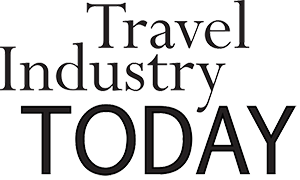The spate of recent aviation disasters and close calls have people worried about the safety of flying. The midair collision that killed 67 near Washington, the fiery plane crash in Philadelphia and a commuter plane crash on Friday in Alaska are only the most high-profile disasters.
There was also a Japan Airlines plane that clipped a parked Delta plane while it was taxiing at the Seattle airport earlier last week and a United Airlines plane caught fire during takeoff at the Houston airport after an engine problem sparked a fire on the wing.
That’s not even to mention the security concerns that arose after stowaways were found dead inside the wheel wells of two planes and aboard two other flights. And don’t forget the passenger back in January who opened an emergency exit door on a plane while it was taxiing for takeoff in Boston.
So of course, people are wondering whether their flight is safe?
What happened in the worst incidents?
The Jan. 29 collision between an American Airlines passenger jet and an Army helicopter killed everyone aboard both aircraft. It was the deadliest plane crash in the US since Nov. 12, 2001, when a jet slammed into a New York City neighborhood just after takeoff, killing all 260 people on board and five on the ground. There hadn’t even been a deadly crash of any kind involving a US airliner since February 2009.
Crashes are more common involving smaller planes like the single-engine Cessna that went missing in Alaska on Thursday with 10 people aboard. Crews were searching for that plane Friday.
A medical transportation plane crashed in Philadelphia on Jan. 31, killing the six people onboard and another person on the ground. That Learjet generated a massive fireball when it smashed into the ground in a neighborhood not long after taking off from a small airport nearby.
How worried is too worried?
Fatal crashes attract extraordinary attention partly because they are rare. The track record of North American airlines is remarkably safe, as demonstrated by the long stretch between fatal crashes.
But deadly crashes have happened more recently elsewhere around the world, including one in South Korea that killed all 179 people aboard in December. There were also two fatal crashes involving Boeing’s troubled 737 Max jetliner in 2018 and 2019. And last January, a door plug blew off a 737 Max while it was in flight, raising more questions about the plane.
And concerns about overtaxed and understaffed air traffic control system have been raised for years. Among the reasons they have cited for staffing shortages are uncompetitive pay, long shifts, intensive training and mandatory retirements.
Donald Trump fanned those concerns Thursday when he blamed the midair collision on the “obsolete” air traffic control system in the US that airports rely on and promised to replace it.
But even with all that, US Transportation Secretary Sean Duffy went on Fox News earlier this week and tried to assure viewers that air travel is “way safer than travelling in a car and train. This is the safest mode of transportation.”
Statistical back up.
The US National Safety Council estimates that consumers south of the border have a 1-in-93 chance of dying in a motor vehicle crash, while deaths on airplanes are too rare to calculate the odds. Figures from the US Department of Transportation tell a similar story.
In the US, National Transportation Safety Board and Federal Aviation Administration are investigating these recent crashes and close calls to determine what caused them and look for ways to prevent similar incidents.
There have already been troubling revelations about the midair collision, but it will take more than a year to get the full report on what happened.
The NTSB always recommends steps that could be taken to prevent crashes from happening again, but the agency has a long list of hundreds of previous recommendations that have been ignored by other government agencies and the industries it investigates.
But Duffy said the public is right to say that crashes like the recent ones are unacceptable – and that “safety is paramount.”
If this article was shared with you by a friend or colleague, you may enjoy receiving your own copy of Travel Industry Today with the latest travel news and reviews each weekday morning. It’s absolutely free – just CLICK HERE.

